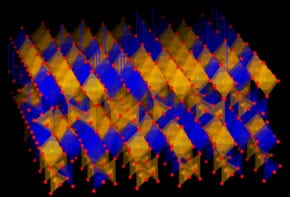
Lithium has been the material of choice for lithium battery anodes on account of the ultrahigh theoretical capacity of 3861 mAh g-1. However, despite successful use of lithium in primary batteries, in practice the performance of lithium falls far short of its theoretical potential. One of the main factors is the formation of dendritic structures on the lithium anode during the repeated plating or stripping processes, which inhibits its cyclability and leaves it prone to short-circuiting and hazardous thermal failure.
One possible way to manipulate the deposition of lithium during cycling to avoid dendrite formation is by constructing an interfacial layer that gradually fades from lithiophilic to lithiophobic properties, which has now been studied by a research collaboration in China. Liqiang Mai, Yan Zhao from Wuhan University of Technology and Hao Zhang from the Research Institute of Chemical Defense worked with colleagues at Beijing Institute of Technology and Beijing University of Chemical Technology in China. They studied the performance of lithium anodes with a range of different interfacial layers, including carbon nanotubes, zinc oxide loaded carbon nanotubes, graphene, carbon black and carbon fibre.

From their observations they could conclude that suppressing dendrite formation requires an interfacial layer that is lithiophobic, mechanically robust, and allows favourable Li ion diffusion. As a lithiophobic layer carbon nanotubes proved effective at blocking dendrites to a certain degree, but Mai and colleagues found that long-term cycling eventually cause mossy lithium deposits to build up under the interfacial layer inhibiting the battery’s performance.
To guard against both the formation of dendrites and mossy deposits, the researchers incorporated carbon nanotubes loaded with gradually increasing quantities of ZnO, which changes the carbon nanotubes from lithiphobic to lithiophilic. The gradually faded blend of materials further improved the deposition behaviour of lithium during cycling, leaving the battery stable after 520 cycles – whereas the nanotube-coated cell started to show signs of voltage divergence after 400 cycles. The differences in behaviour became more apparent at higher current densities of 5 mA cm−2 and 10 mA cm−2.

Energy storage technologies vie for investment
Using scanning electron microscopy, the researchers confirmed that lithium deposited on the electrode with a gradient interface layer had no crevices or dendrites, and there were no lithium deposits on the upper carbon nanotube layer, even after 520 cycles. They also demonstrate the success of the gradient lithiophilic-lithiophobic interface strategy in lithium-sulphur batteries.
“I think this is a very good strategy for getting a long-cycling battery,” Mai tells Physics World. “So it’s a very good candidate for companies developing this strategy for large-scale application.”
Full details are reported in Nature Communication.



